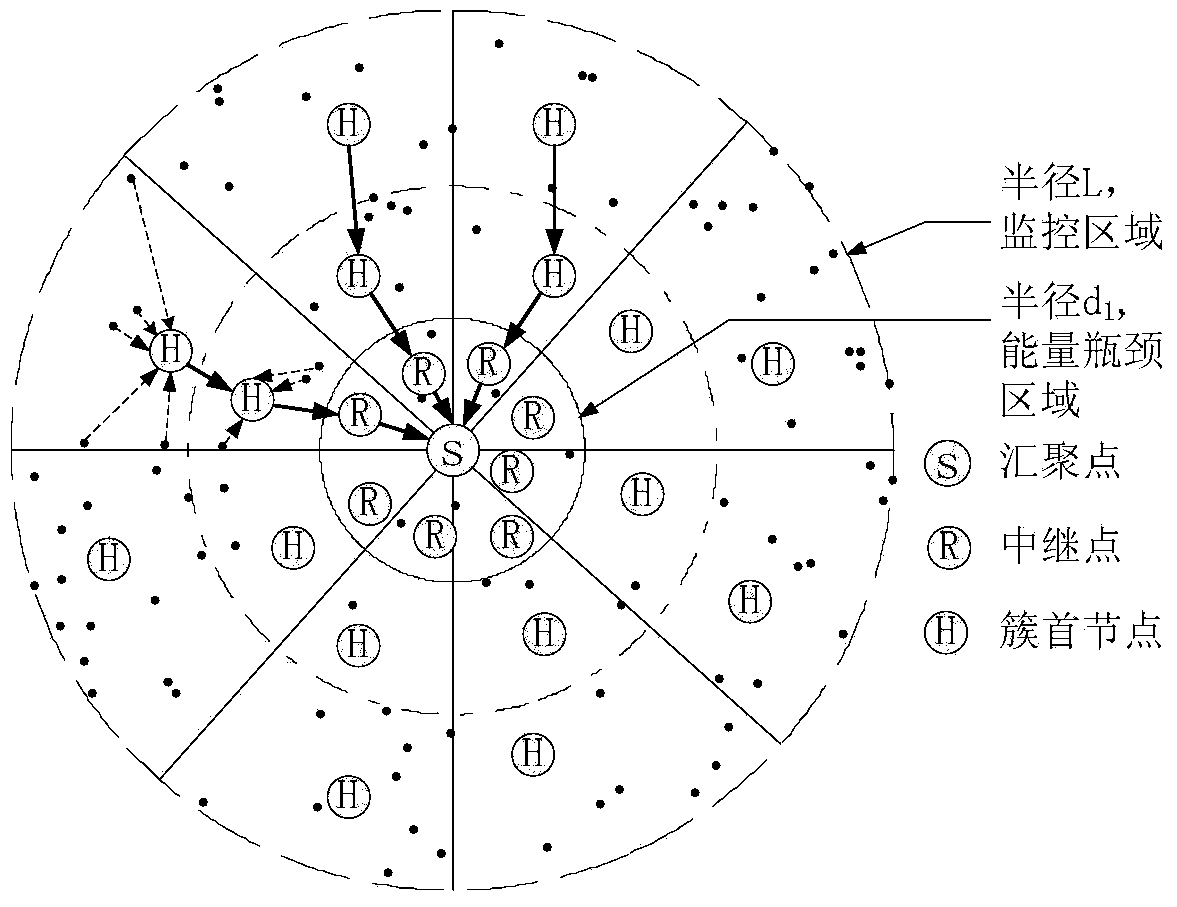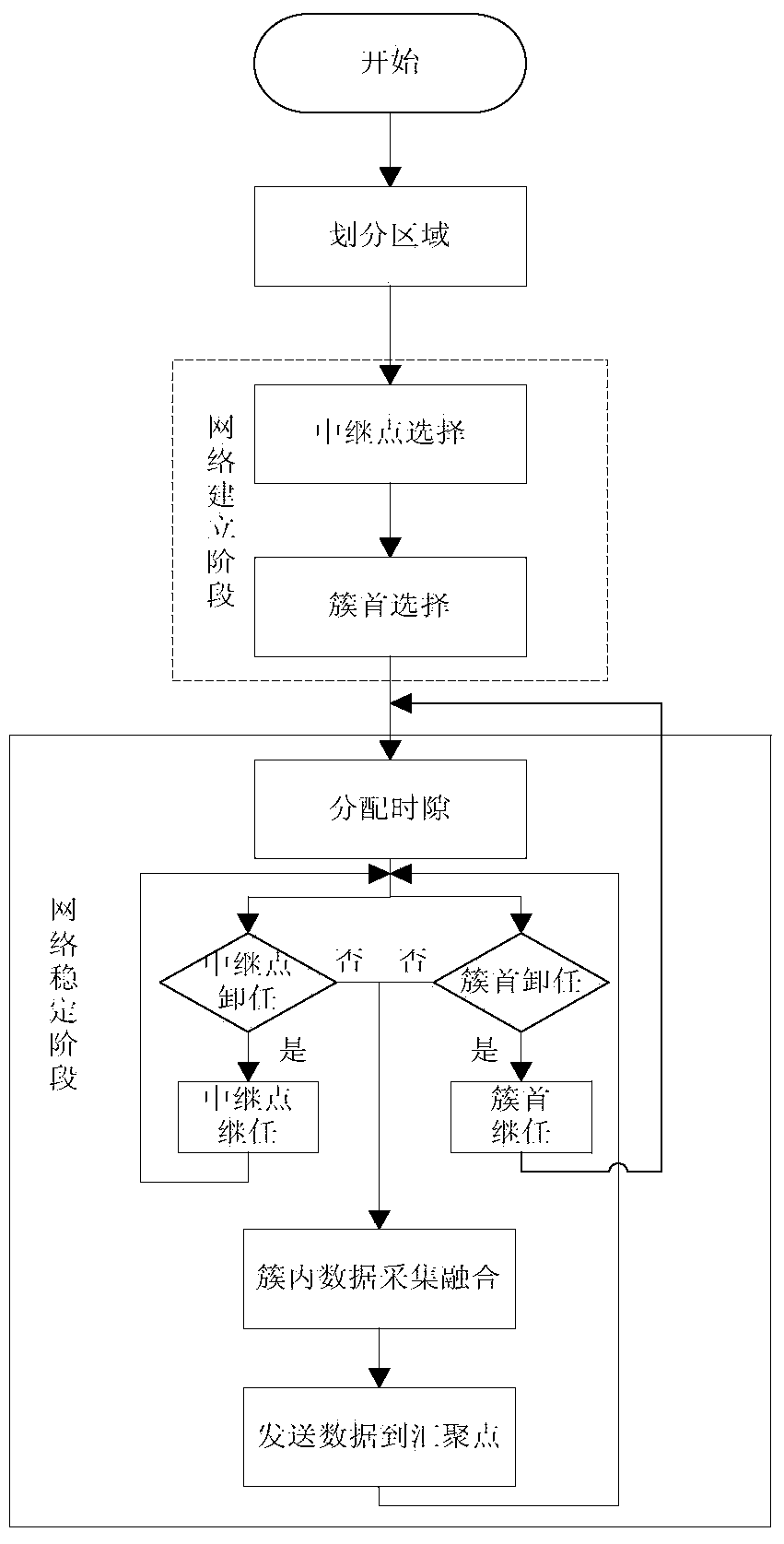Method of communication of wireless sensor network routing protocol on basis of fan-shaped clusters
A wireless sensor and routing protocol technology, applied in wireless communication, network topology, sustainable communication technology and other directions, can solve the problems of not easy to recharge, short network life cycle, heavy load of sensor nodes near the convergence point, etc., to reduce the frequency, energy saving effect
- Summary
- Abstract
- Description
- Claims
- Application Information
AI Technical Summary
Problems solved by technology
Method used
Image
Examples
specific Embodiment approach 1
[0040] Specific implementation mode one: the specific steps of the communication method of the wireless sensor network routing protocol based on sector clustering in this implementation mode are as follows:
[0041] Step 1: Monitoring area clustering area:
[0042] The entire monitoring area is divided into m fan-shaped areas and n ring-shaped layers. The first layer near the convergence point does not form clusters, and there are m*(n-1) clustering areas in total;
[0043] Step 2: Relay point selection in the network establishment phase:
[0044] The convergent point first goes to d 1 The nodes in the energy bottleneck area within the radius send election conditions, and the nodes that meet the energy conditions send requests to the sink point, and the sink point selects a relay node from each of the divided m fan-shaped areas, and selects the highest energy value for the first time If there are multiple nodes with the same energy, randomly select one as a relay point;
[...
specific Embodiment approach 2
[0065] Embodiment 2: The difference between this embodiment and Embodiment 1 is that in the first step, the monitoring area is a circular area with the convergence point S as the center and the radius L.
[0066] Other steps and parameters are the same as those in Embodiment 1.
specific Embodiment approach 3
[0067] Embodiment 3: The difference between this embodiment and Embodiment 1 or 2 is that in Step 3, the sensor node transmission mode is divided into two types: 1) Radius d 1 All sensor nodes within the range directly send data to the sink point S, and act as relay nodes at the same time, forwarding the data sent back by the peripheral sensors; 2) in the d 1 The area outside the circle with radius is divided into ring-shaped areas of different sizes with different radii. In these areas, the clustering algorithm is used for data collection. Each sensor node gathers the collected data to the cluster head and then performs data fusion. Then send it to the upper-level cluster head or relay point, and send the data to the convergence point through multi-hop. The entire network is processed in layers. The layer close to the convergence point is the first layer, and the outer layer is the second layer and the third layer..., so as to By analogy, the sink node knows the location and ...
PUM
 Login to View More
Login to View More Abstract
Description
Claims
Application Information
 Login to View More
Login to View More - R&D
- Intellectual Property
- Life Sciences
- Materials
- Tech Scout
- Unparalleled Data Quality
- Higher Quality Content
- 60% Fewer Hallucinations
Browse by: Latest US Patents, China's latest patents, Technical Efficacy Thesaurus, Application Domain, Technology Topic, Popular Technical Reports.
© 2025 PatSnap. All rights reserved.Legal|Privacy policy|Modern Slavery Act Transparency Statement|Sitemap|About US| Contact US: help@patsnap.com



